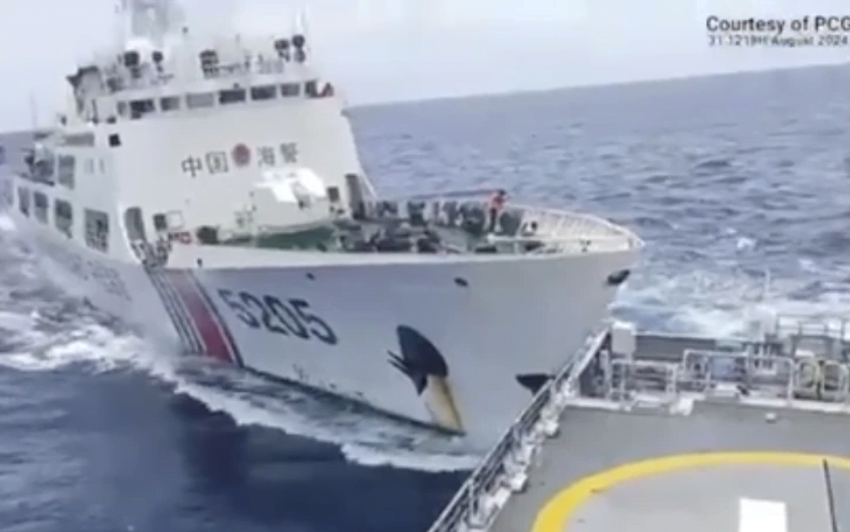Chinese and Philippine ships collide at a contested atoll, leading to a exchange of accusations between the two governments.
- Blog
 PH Chronicle Team
PH Chronicle Team- August 31, 2024
- 0
- 113
- 2 minutes read

In this image from the Philippine Coast Guard, a Chinese Coast Guard ship (right) collides with the Philippine vessel BRP Teresa Magbanua near Sabina Shoal in the disputed South China Sea on August 31, 2024. Philippine Coast Guard/AP
In a dramatic escalation of maritime tensions, China and the Philippines have accused each other of deliberately causing a collision between their coast guard vessels in the disputed waters of the South China Sea. This incident, occurring near the contentious Sabina Shoal, marks the fifth maritime confrontation between the two nations in a month, underscoring the persistent volatility in the region.
The clash unfolded on Saturday, with each side offering conflicting narratives. According to Liu Dejun, a spokesperson for the Chinese coast guard, a Philippine ship maneuvered recklessly, resulting in a “deliberate collision” with a Chinese vessel. In stark contrast, Philippine officials reported that their coast guard ship, the BRP Teresa Magbanua, was rammed three times by the Chinese without provocation, sustaining damage.
This altercation is part of a broader geopolitical struggle over the South China Sea, a vital waterway rich in resources and crucial for global trade, with annual flows estimated at $3 trillion. China claims nearly the entire sea, a stance rejected by a 2016 ruling from the Permanent Court of Arbitration, which found China’s claims to be legally unfounded—a decision Beijing continues to dismiss.
The Philippines, asserting its rights within its exclusive economic zone, has maintained a presence at Sabina Shoal since mid-April, wary of potential Chinese construction activities. In response, China has filed a diplomatic protest against the Philippines, accusing it of illegal occupation.
The ongoing disputes have heightened the risk of involving other regional players, including the United States, which has reaffirmed its defense commitments to the Philippines. U.S. Ambassador to the Philippines, MaryKay Carlson, condemned China’s actions as violations of international law.
As tensions simmer, Philippine Coast Guard Commodore Jay Tarriela emphasized that the BRP Teresa Magbanua would remain at Sabina Shoal, undeterred by what he described as China’s “harassment and bullying.”
This maritime standoff not only highlights the fragile peace in the South China Sea but also the potential for broader international implications, as other claimants like Vietnam, Taiwan, Malaysia, and Brunei watch closely .


